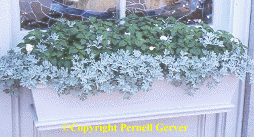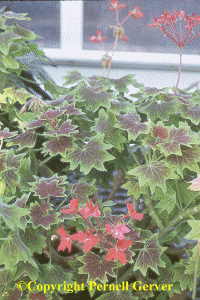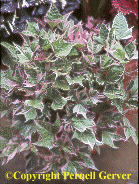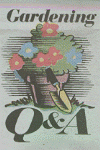

|
All
About Gardening and Gardening Q & A |
|
Bookmark
this page or add it to your favorites now! |
|
"Tips for Successful Container Gardening" |
|
Regardless of the size or shape of the container, the three main design elements in any container garden are upright, mounding, and trailing plants. By combining a plant or two from each category in a container garden, the results will be a beautiful and appealing display that will look good all season long. When it comes to gardening in containers, a full container right away is the desired effect, so don’t be afraid to put in as many plants as possible. You can always come back later as the plants grow and trim back, or remove altogether, if necessary. Upright plants provide height in a container garden. As a general rule of thumb the tallest plants should be about twice the height of the container. This provides good visual balance to the container garden. |
|
Placement of the upright plants varies, depending on the container. They can be placed in the center of the container and surrounded by mounding and trailing plants or they can be planted towards the back and side of the container with the other plants in front. In a container that is viewed from all sides, the upright plants look best planted in the center. In a container that is viewed from just the front like a windowbox the upright plants should be planted in the back.
There are many different plants with a mounding habit that are good container plants and I like to include at least one in every container I plant. If the container is large enough, I’ll plant several different kinds of mounding plants.
|

 Container
gardening is a great way to garden, especially for those who have
little or no space or time for a garden. Just about any plant can be
grown in a container garden. I like to use containers as accents in
the garden. Because they’re in containers, the pots can be moved
around and placed where color is needed. I also like to group
containers of different sizes together for an even better display.
Container
gardening is a great way to garden, especially for those who have
little or no space or time for a garden. Just about any plant can be
grown in a container garden. I like to use containers as accents in
the garden. Because they’re in containers, the pots can be moved
around and placed where color is needed. I also like to group
containers of different sizes together for an even better display.
 Mounding
plants are used to fill in the center of a container garden. Not as
tall as the upright plants, mounding plants, as their name implies,
form an attractive mound of foliage and/or flowers depending on the plant.
Mounding
plants are used to fill in the center of a container garden. Not as
tall as the upright plants, mounding plants, as their name implies,
form an attractive mound of foliage and/or flowers depending on the plant. Trailing
plants are used in a container to help soften the edge and draw the
eye downward. These types of plants have long stems that drape and
trail. Many can grow to several feet long or more. Trailing plants
are planted right along the edge of the container either in the front
in a container that’s viewed from just the front or all around
the edge in a container that’s viewed from all sides.
Trailing
plants are used in a container to help soften the edge and draw the
eye downward. These types of plants have long stems that drape and
trail. Many can grow to several feet long or more. Trailing plants
are planted right along the edge of the container either in the front
in a container that’s viewed from just the front or all around
the edge in a container that’s viewed from all sides. by
Pernell Gerver
by
Pernell Gerver Pernell
Gerver, Horticultural Communication Services All rights reserved.
Pernell
Gerver, Horticultural Communication Services All rights reserved.